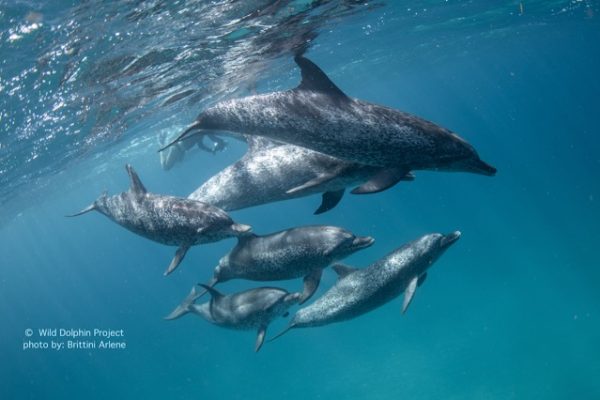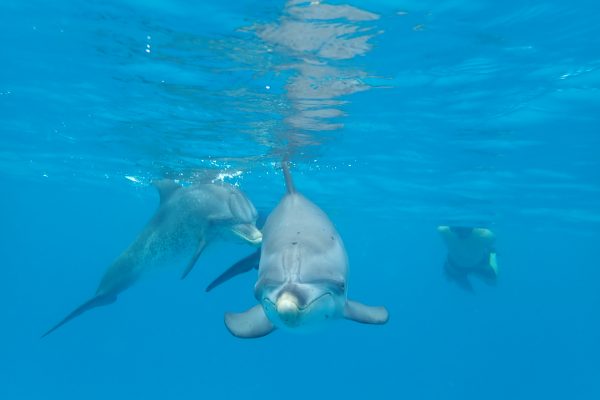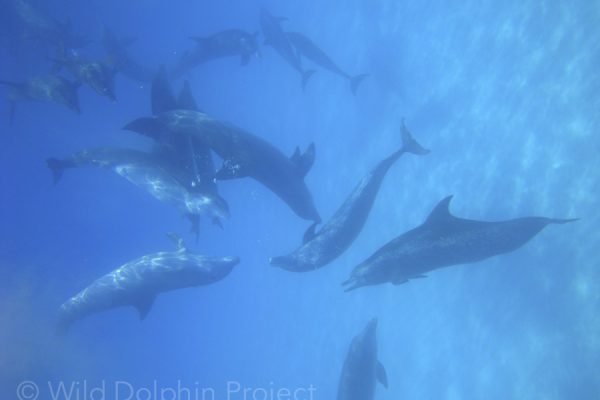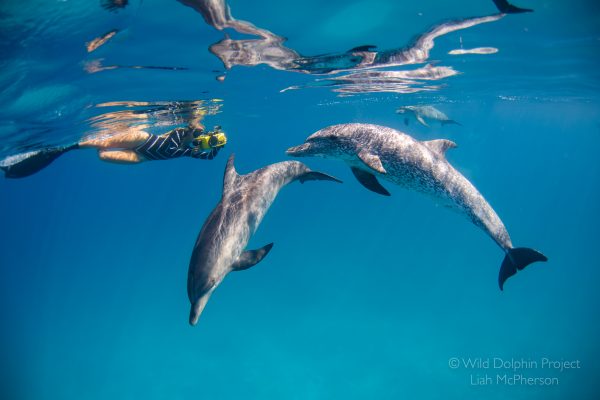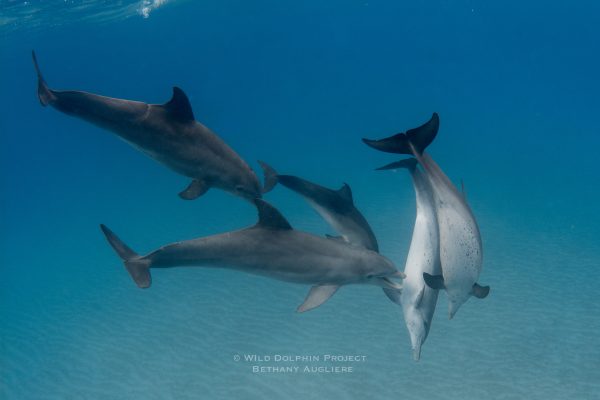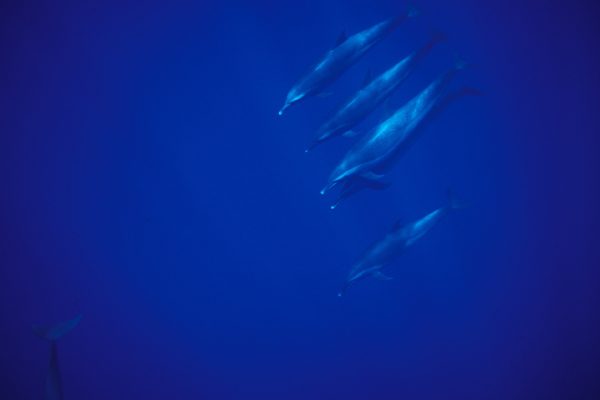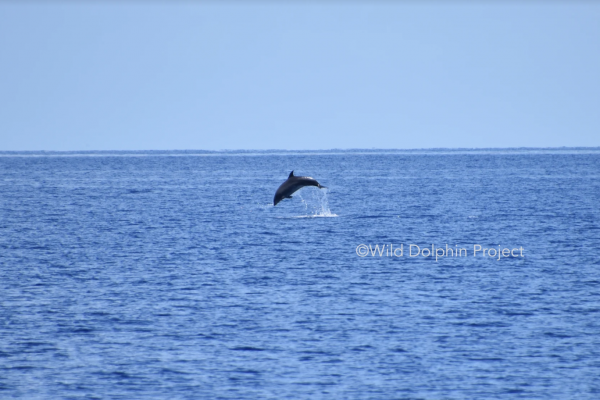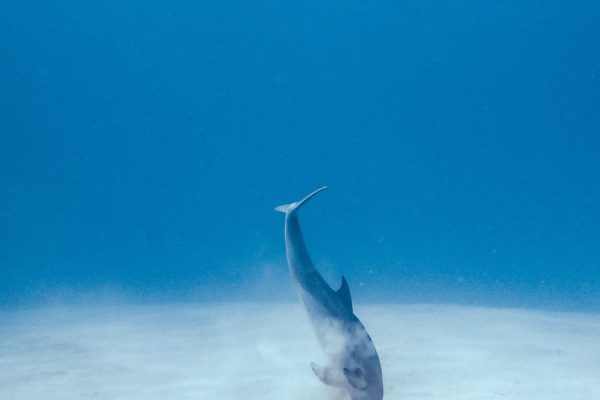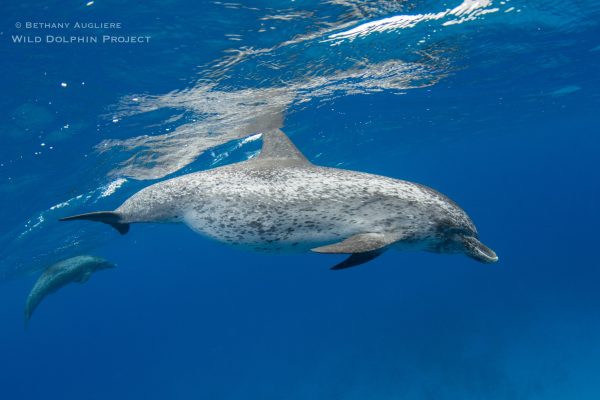New Research: Making Friends!
A natural social experiment has been taking place in Bahamian waters, and we’ve been there to witness it. As it turns out, dolphins can make friends with strangers, according to our new research published in the journal Marine Mammal Science. Exodus In 2013, about 50% of the Atlantic spotted dolphins
Dolphin Detective
Much of our long-term work studying dolphins in the Bahamas relies on identifying individuals in the population. By tracking individuals we can understand patterns in relationships, communication, and behavior differences between sexes and age classes, among many other things. To do this, sometimes requires a bit of detective work. We
Studying Behavior: From Observing To Understanding
At the Wild Dolphin Project, we’ve studied everything from dolphin communication, to social structure, genetics and ecology. One of the most common fields we cover is animal behavior, to examine topics such as interspecies aggression, feeding, and even teaching. In addition to gaining insight into the behavior of a species,
New Research Alert! Shifting Home Ranges in Spotted Dolphins
Recently, WDP graduate student Brittini Hill completed her master’s degree and thesis research. So, WDP sat down with Brittini to talk to her about her research and why she was interested in this question. Check it out. WDP: What was the goal of this research paper? BH: In 2013, an
New Research: Spotted Dolphins Riskier When Fighting Other Species
Despite their friendly appearance, dolphins aren’t just cute and cuddly. They are wild animals that engage in aggressive behaviors, just like any other animal. Since 1985, we’ve observed the interactions between two species of dolphins who share the waters of the Bahamas Banks, the spotteds (Stenella frontalis) and bottlenose (Tursiops
What is Synchrony and Why Does it Matter?
In the wild, the ability for social animals to work together is crucial for survival. And as it turns out, in spotted dolphins, not only do they work together but they also synchronize their behaviors. In the Bahamas, spotted dolphins and bottlenose dolphins both live on the shallow sandbanks. While
More than Spotted Dolphins…
False killer whales, sperm whales, pilot whales, offshore bottlenose dolphins, Risso’s dolphins —these are just a few of the amazing marine mammals we’ve seen when crossing from Florida to the Bahamas to research the resident dolphins in our study site. Surprisingly, however, little is known about mammals in this region
Offshore and Nearshore Bottlenose Dolphins – What’s the Difference?
In the Bahamas, we study two species dolphins at our field site: the Atlantic spotted dolphin (Stenalla frontalis) and the Atlantic bottlenose dolphin (Tursiops truncatus). These are both members of the family Delphinidae, the oceanic dolphins. We spend a lot of our time focusing on the spotteds, but in this
Feeding Frenzy
Editor’s Note: This blog originally followed Thanksgiving, but we had a website crash and lost the entire blog, which had to be rewritten! So, if you missed it the first time…here it is again. We’re talking about FEEDING — an important part of survival! More specifically, we’re talking about dolphin
Fall is baby season for dolphins!
All summer long we observe wild dolphins in the Bahamas — and some of those dolphins are pregnant. Based on long-term observation of individuals, Denise Herzing, founder and research director of the Wild Dolphin Project, determined that female Atlantic spotted dolphins have two peak calving seasons in early spring and

